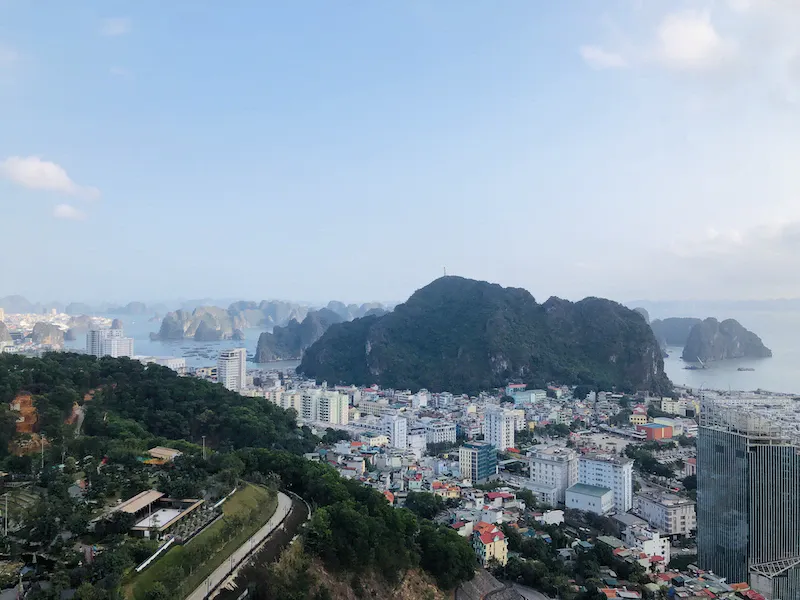Vietnam Travel Guide: Tips for Unforgettable Adventures

Essential Tips for an Unforgettable Vietnam Adventure
Vietnam, a captivating destination brimming with bustling cities, hidden culinary gems, picturesque rice terraces, and awe-inspiring landscapes, is calling your name. As a seasoned traveler and a passionate copywriter, I’ve compiled this comprehensive guide to help you make the most of your Vietnam experience, filled with valuable tips and insights to ensure a seamless journey.
1. Visa: Don’t Leave Home Without It
Before setting foot in Vietnam, make sure you apply for a visa. Check the visa regulations for your passport and apply via the Vietnamese Embassy website. While visas on arrival are available at major airports, save yourself time by having your visa, passport-sized photos, and USD ready beforehand.
2. Vaccinations: Plan Ahead for a Healthy Trip
Schedule an appointment with your doctor or local health center at least six weeks prior to departure to determine which vaccinations are necessary for your visit. The more remote your destinations, the more vaccinations you may require.
3. Book Your First Night’s Accommodation in Advance
Spare yourself the stress of searching for a place to stay after a long flight by booking your first night’s accommodation in advance. This is particularly important in Hanoi, where the city quiets down after 11 p.m.
4. Currency: Get the Best Bang for Your Buck
Vietnam uses both US dollars and Vietnamese dong. US dollars are typically used for hotels, tours, and transportation, while dong is more commonly accepted in restaurants, shops, bars, and market stalls. Opt for dong whenever possible, as it often results in better value.
5. Travel Agencies: A World of Possibilities
In Vietnam’s major cities, you’ll find countless travel agencies eager to assist you in booking tours or transportation. Don’t hesitate to use their services, but always shop around for the best price and package. And remember, haggling is expected in Southeast Asia – especially in markets and independent shops.
6. Packing Tips: Stay Prepared and Comfortable
When packing for Vietnam, prioritize lightweight, casual clothing. Don’t forget essentials such as a Pashmina and lightweight long trousers for temple visits, layers for cooler regions, a waterproof jacket for the rainy season, mosquito repellent, and a dry bag for water activities.
7. Timing Your Visit: Finding the Sweet Spot
The best time to visit Vietnam depends on the region and your desired experiences. Generally, February to April and August to October offer pleasant weather, but be prepared for crowds and higher prices. For specific regional recommendations, consider the following:
- North: October to April, but expect colder temperatures in December and January
- Central and South: November to May to avoid typhoons
8. Must-Visit Destinations in Vietnam
To truly appreciate Vietnam, consider visiting these iconic destinations:
- Hanoi: Immerse yourself in the fusion of Southeast Asian, French, and Chinese influences, and explore the Old Quarter, temples, and night markets.
- Halong Bay: Embark on a scenic cruise through this stunning area.
- Sapa: Witness the breathtaking rice terrace fields and their panoramic views.
- Ninh Binh: Discover the extraordinary landscapes and immerse yourself in nature.
- Hue: Experience the vibrancy of this former Vietnamese capital.
- Hoi An and Da Nang: Explore the charming water town of Hoi An and the up-and-coming beach destination of Da Nang.
- Ho Chi Minh City: Delve into the city’s fascinating history and visit the numerous museums.
9. Savor the Local Cuisine
Vietnam is a food lover’s paradise, known for its delicious street food and hole-in-the-wall eateries. Sample the famous pho, indulge in banh mi sandwiches, and treat yourself to other local favorites like bun cha, nem, and com tam. Don’t be afraid to venture off the beaten path and explore local markets to fully experience the authentic flavors of Vietnam.
10. Hug Local Customs and Etiquette
When visiting Vietnam, it’s essential to respect local customs and traditions. Always remove your shoes before entering a temple or someone’s home, dress modestly when visiting religious sites, and avoid public displays of affection. Remember to be patient and polite when dealing with language barriers and always greet people with a smile.
11. Transportation: Getting Around in Vietnam
Vietnam offers various transportation options to suit every traveler’s needs. For long-distance travel, consider taking a train, bus, or domestic flight. In cities, you can rely on taxis, Grab (similar to Uber), or even rent a motorbike to explore at your own pace. Be cautious on the roads, as traffic can be chaotic, and always wear a helmet when riding a motorbike.
12. Stay Connected: SIM Cards and Wi-Fi
Staying connected while traveling in Vietnam is relatively easy. Purchase a local SIM card upon arrival at the airport or in the city, and enjoy affordable data and call rates. Free Wi-Fi is also widely available in cafes, hotels, and restaurants throughout the country.
13. Safety Tips for a Worry-Free Trip
Vietnam is generally a safe country for travelers. However, it’s essential to stay vigilant and exercise caution. Keep your belongings secure, especially in crowded areas, avoid walking alone at night, and always be aware of your surroundings. Familiarize yourself with local emergency numbers and the locations of hospitals and embassies for added peace of mind.
Armed with these practical tips and insights, you’re now ready to embark on an unforgettable journey through Vietnam. Hug the country’s rich culture, spectacular scenery, and mouthwatering cuisine, and create memories that will last a lifetime.
Conclusion
As you prepare to embark on your unforgettable Vietnam adventure, take a moment to reflect on the wealth of information, tips, and insights you’ve gathered. From securing a visa and getting vaccinated to exploring must-see destinations and immersing yourself in the local culture, you are now well-equipped to make the most of your journey.
Vietnam’s mesmerizing blend of bustling cities, serene landscapes, and mouthwatering cuisine will captivate you at every turn. As you navigate the country, remember to stay open to new experiences, respect local customs, and hug the unexpected adventures that come your way.
In the end, your trip to Vietnam will be defined not only by the stunning sights and fascinating experiences but also by the connections you make with the people you meet along the way. By following the guidance in this comprehensive guide, you’ll be well on your way to creating lasting memories and forging meaningful connections that will improve your travel experience and leave you longing to return to this remarkable country.
Bon voyage, and may your Vietnam adventure be filled with wonder, joy, and discovery!
1. What is the best way to explore Vietnamese street food safely?
To safely explore Vietnamese street food, stick to busy stalls with high turnover, as this ensures the food is fresh. Keep an eye out for stalls frequented by locals, and don’t be afraid to ask for recommendations. Additionally, pay attention to cleanliness and food preparation practices at each stall.
2. How can I respect local customs while visiting religious sites in Vietnam?
When visiting religious sites in Vietnam, dress modestly by covering your shoulders and knees, and remove your shoes before entering temples or sacred spaces. Keep noise levels down, avoid touching any religious artifacts, and follow any posted guidelines or instructions from site staff.
3. Are there any specific cultural faux pas to avoid in Vietnam?
In Vietnam, avoid pointing your feet at someone, as this is considered disrespectful. Additionally, refrain from touching someone’s head, as it is believed to be the highest and most sacred part of the body. Be mindful of personal space, and avoid public displays of affection.
4. Is it safe to drink tap water in Vietnam?
It is not recommended to drink tap water in Vietnam, as it may contain contaminants. Instead, opt for bottled or filtered water, which is widely available in hotels, restaurants, and shops. When eating out, request drinks without ice, as it may be made from tap water.
5. How can I practice responsible tourism while traveling in Vietnam?
To practice responsible tourism in Vietnam, choose environmentally-friendly accommodations, support local businesses, and respect the local culture and environment. Avoid contributing to overtourism by visiting lesser-known destinations and traveling during the off-season. Additionally, minimize your waste by using reusable water bottles and bags, and disposing of trash responsibly.






